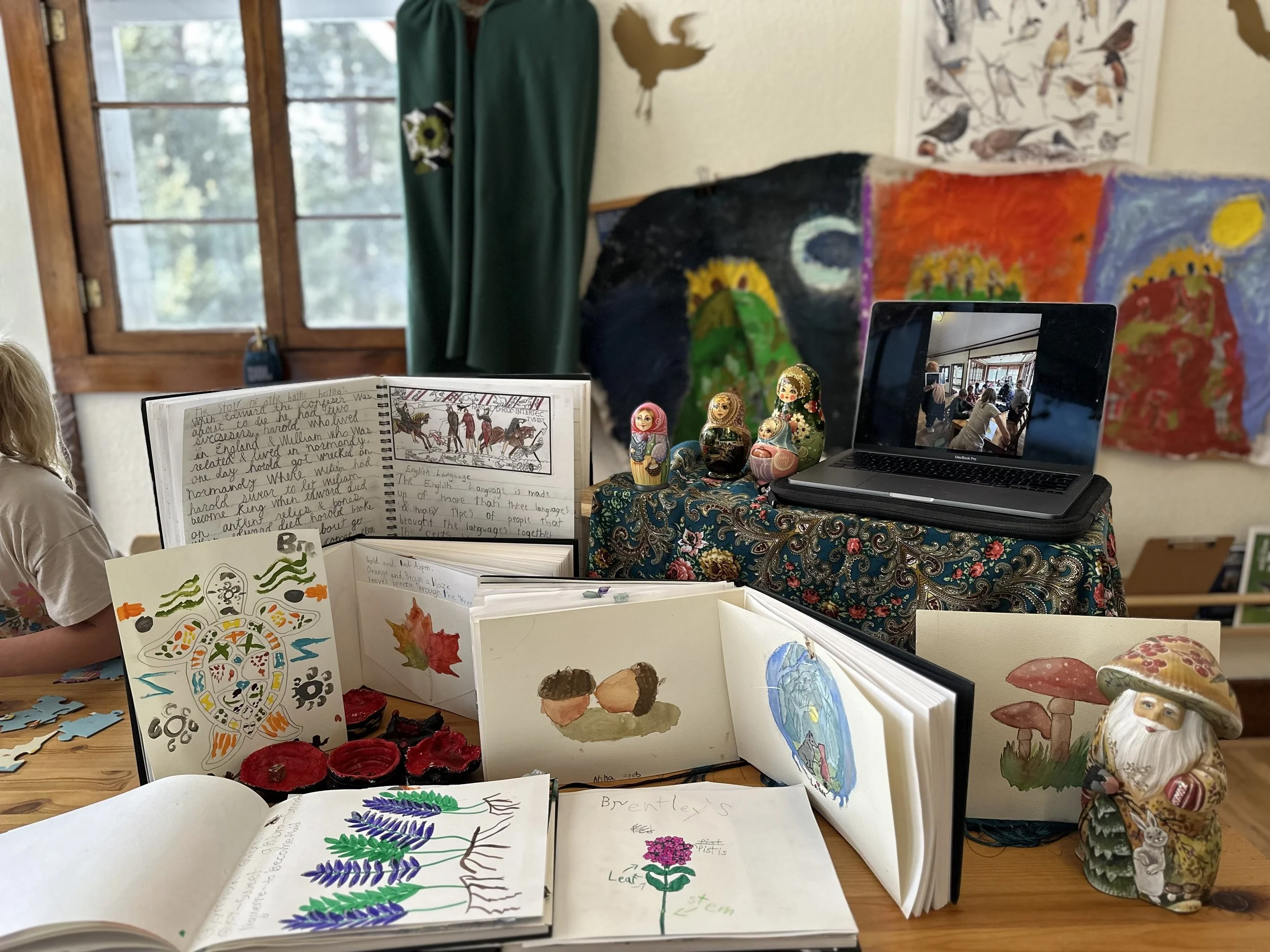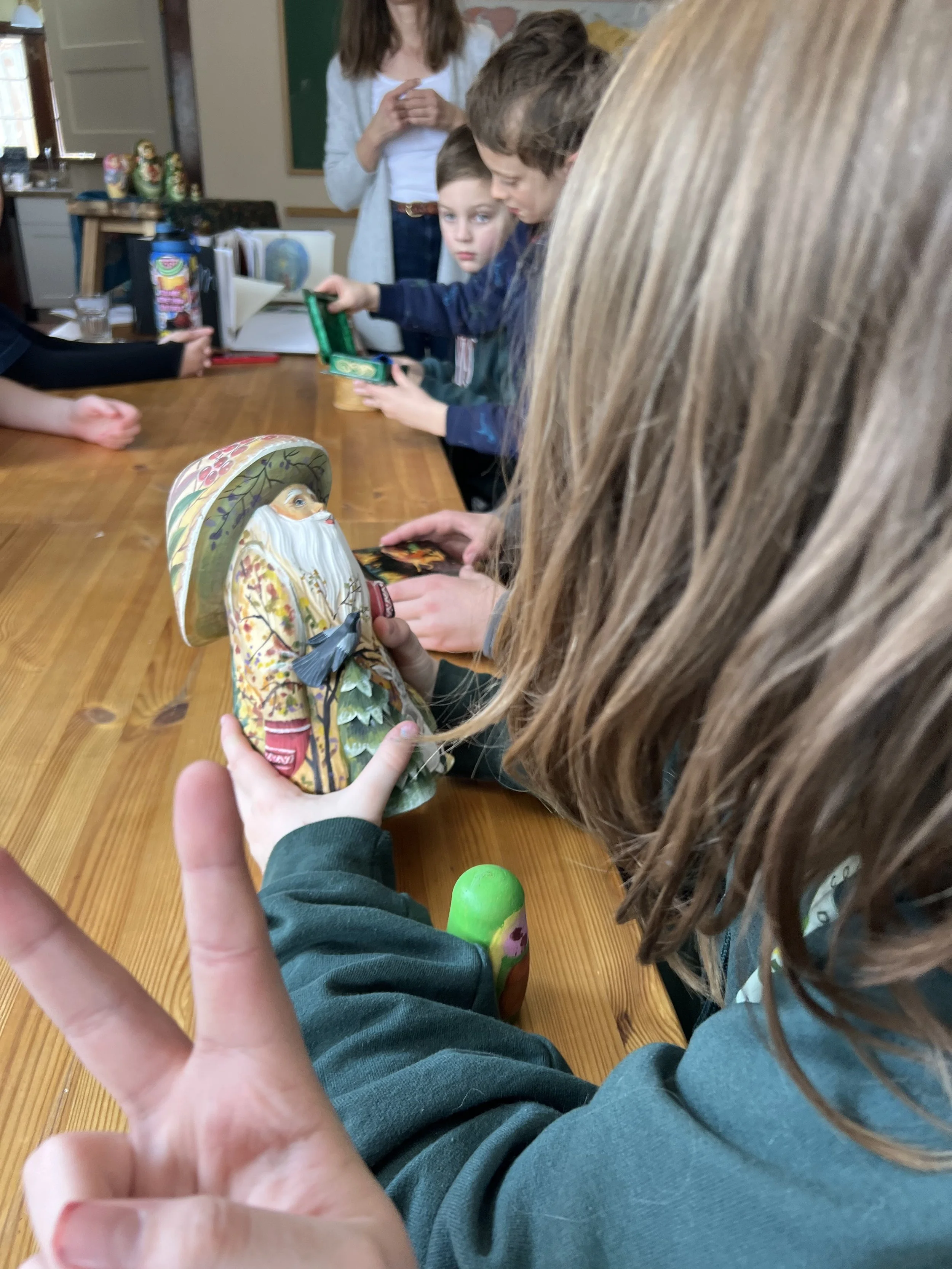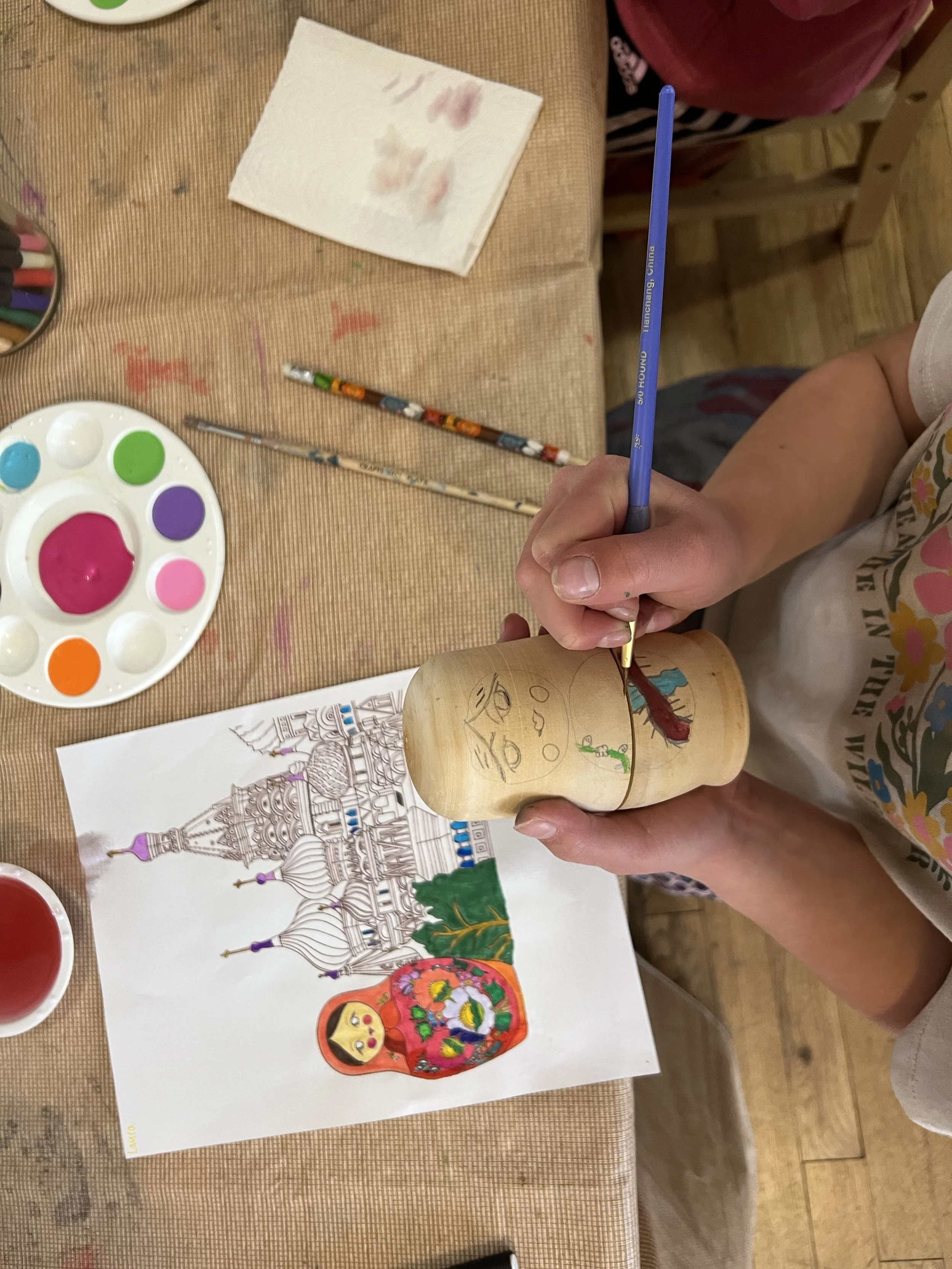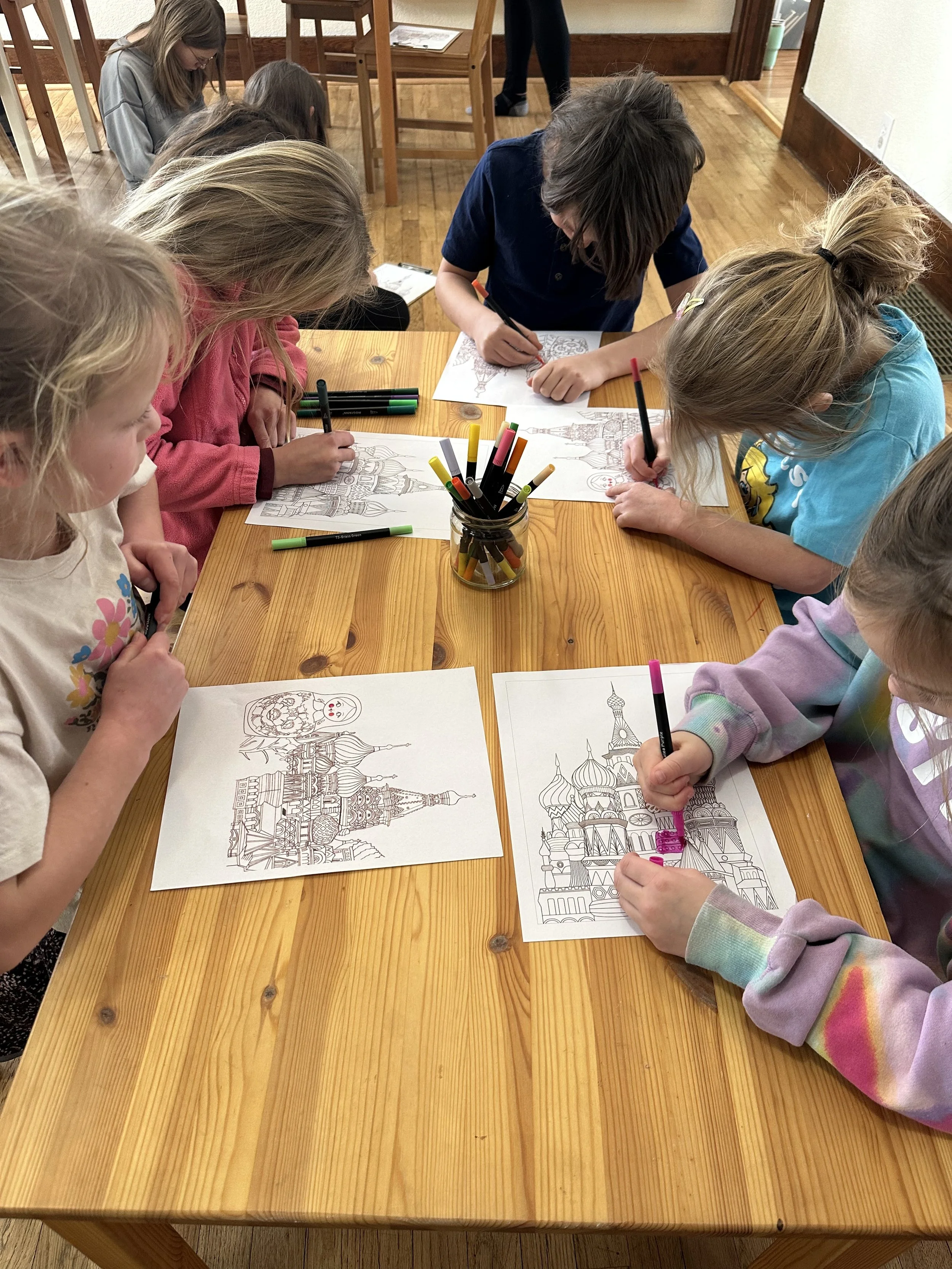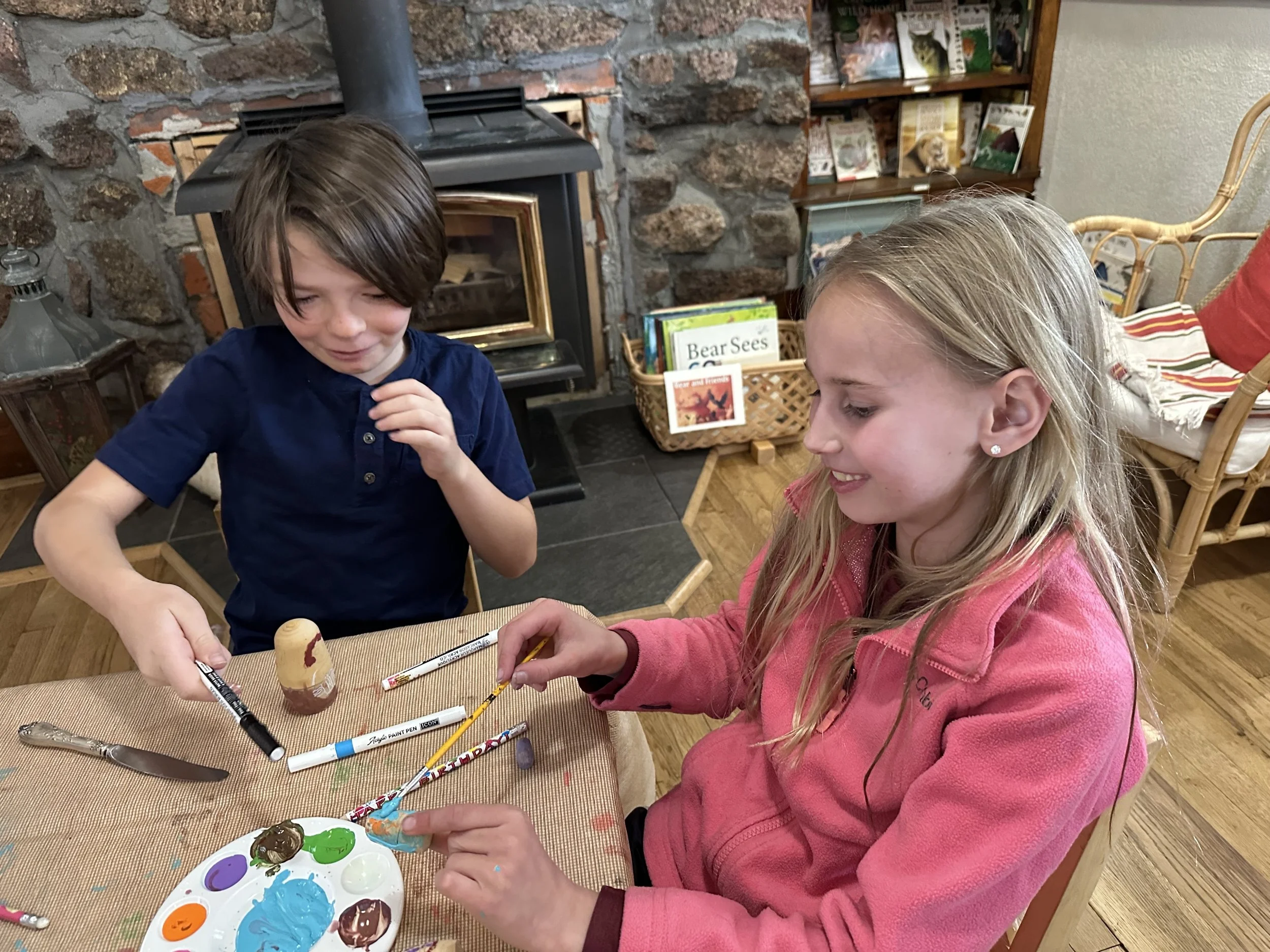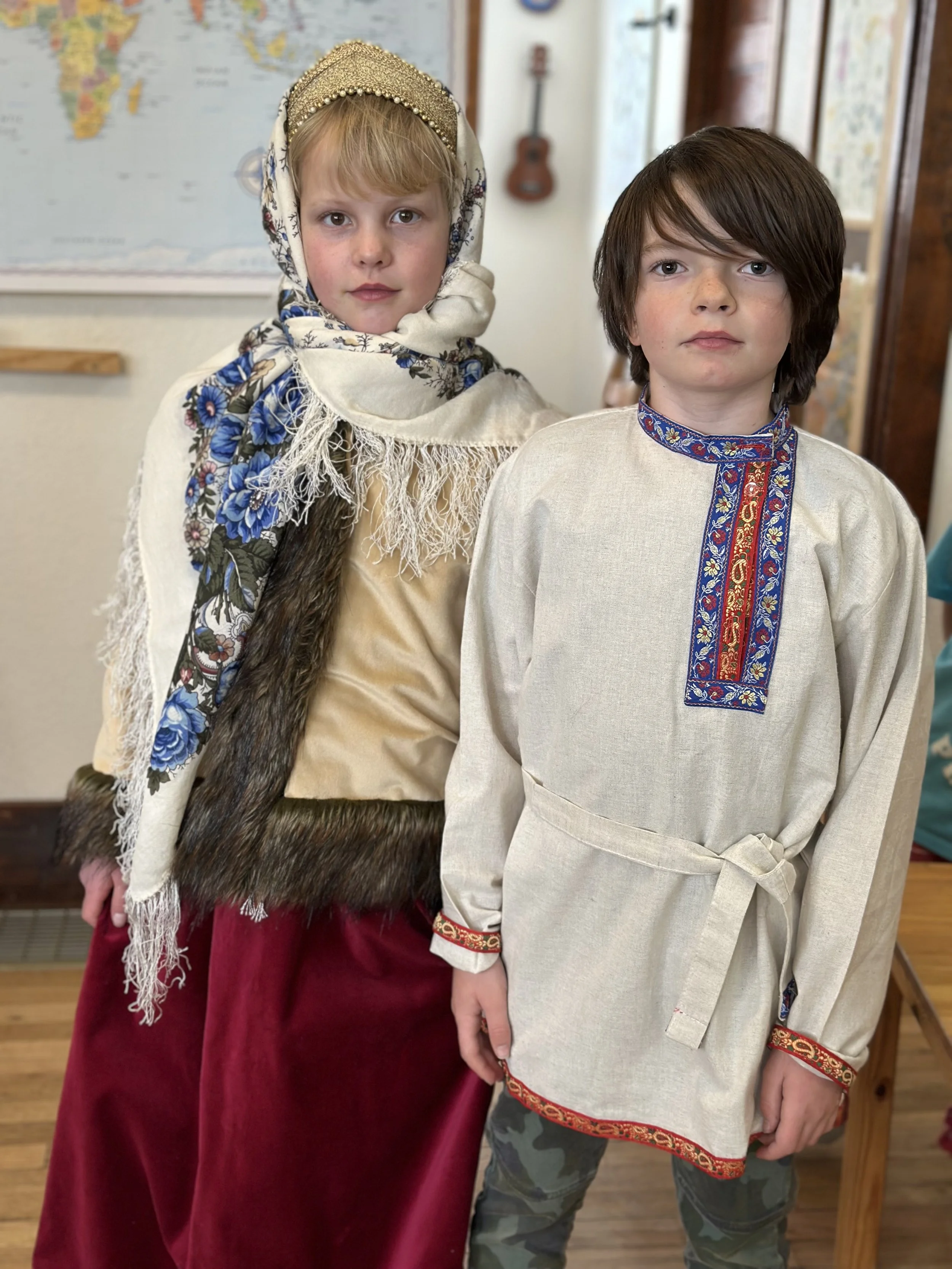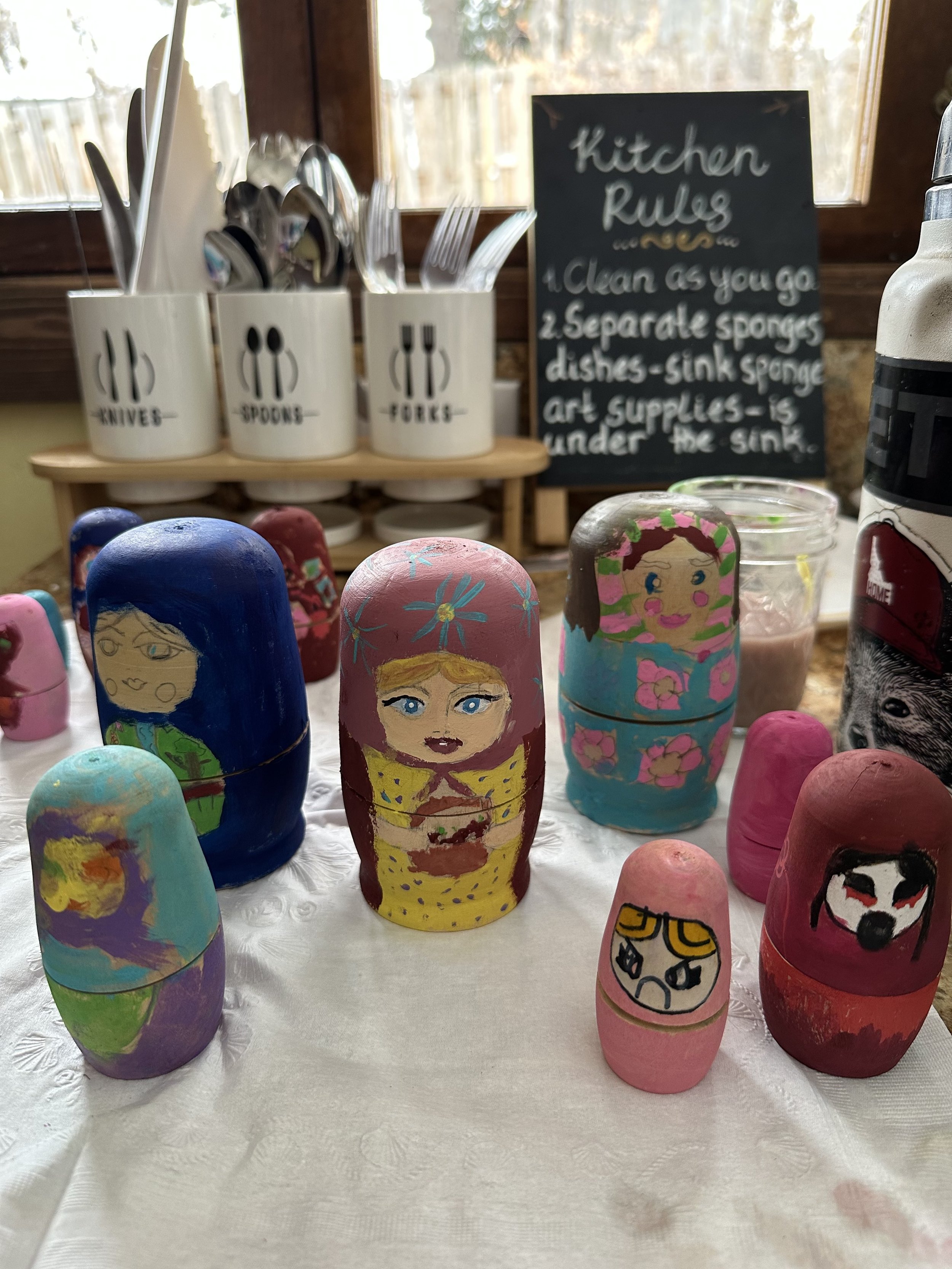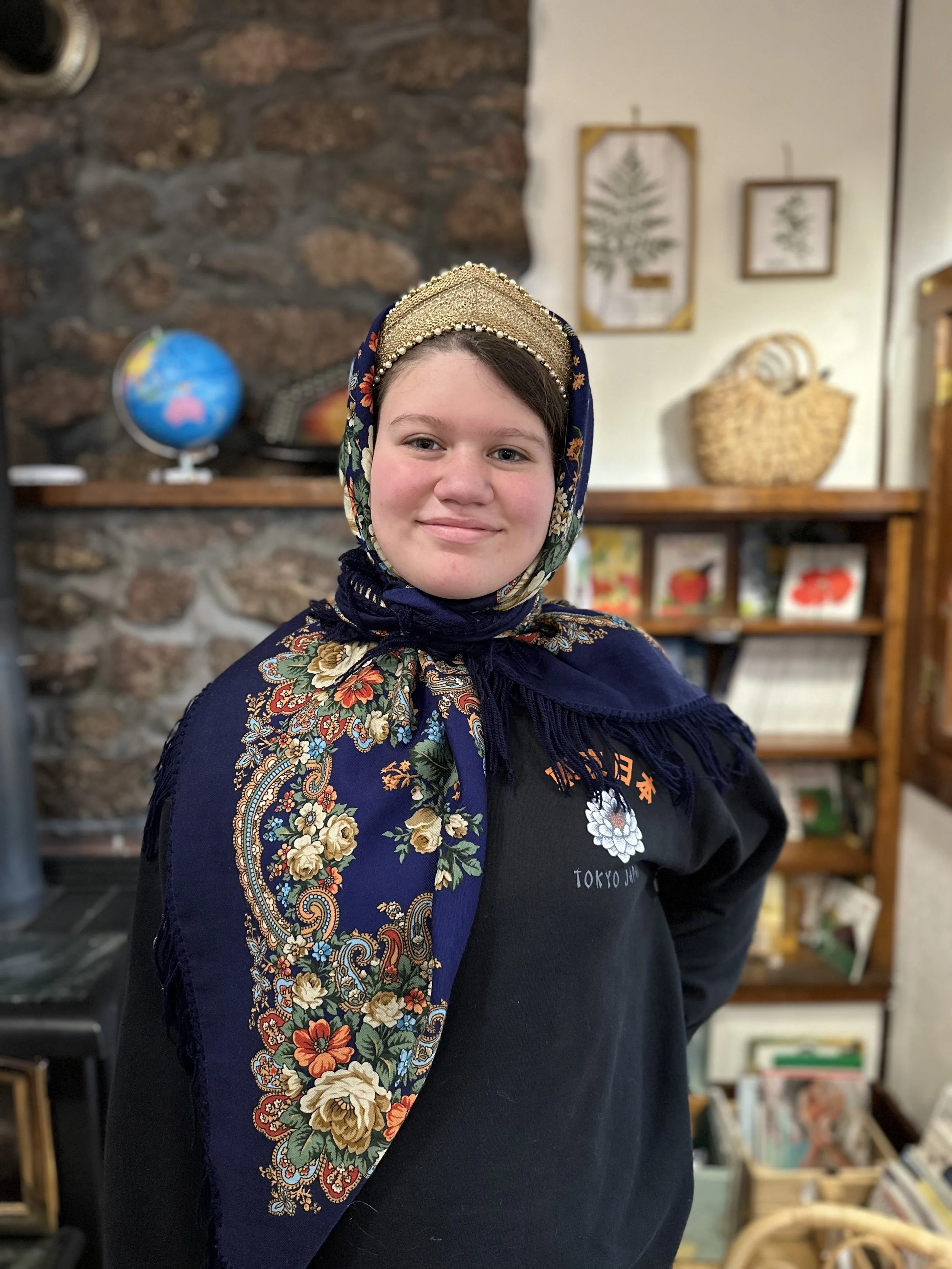Russian History, Nesting Dolls, and the Fibonacci Sequence:
Today was one of those days where you step back and think, Wow, we are learning so much here. We dove headfirst into Russian history—learning about the Russians in Constantinople, Ivan the Great, and Ivan the Formidable. (Side note: why is no one calling their kids “The Formidable” these days?) I think that would be a pretty intimidating moniker. We also got the scoop on “fire water,” which the Turks used in battle, and it was exactly as intense as it sounds.
Then came our creative expression part of the day—painting Russian nesting dolls. We managed to avoid getting paint on the table, the walls, or each other, so it was a wild success with a variety of nesting dolls to enjoy. Maria, the owner of the school house, arrived with beautiful Russian handicrafts, scarves, and clothes. There’s something about slipping on a traditional garment that feels like time-traveling for a moment. All the girls took turns wrapping the scarves around their heads. The boys enjoyed examining the traditional clothes and a traditionally painted music boxes.
This week, we switched from Nature Study to Medieval Scientist/Mathematicians and I shared a lesson about Fibonacci, an Italian mathematician who brought Hindu and Arabic numerals to Europe. His discoveries/promotions of the number pattern: 1, 1, 2, 3, 5, 8, 13, 21, 34, 55, 89, 144 shows the poetry in nature and math.
By the end of the day, I was a little tired and very grateful. There’s something profoundly good about these moments, where learning feels alive and full of color and connection.

